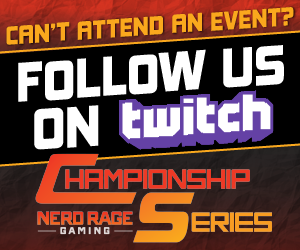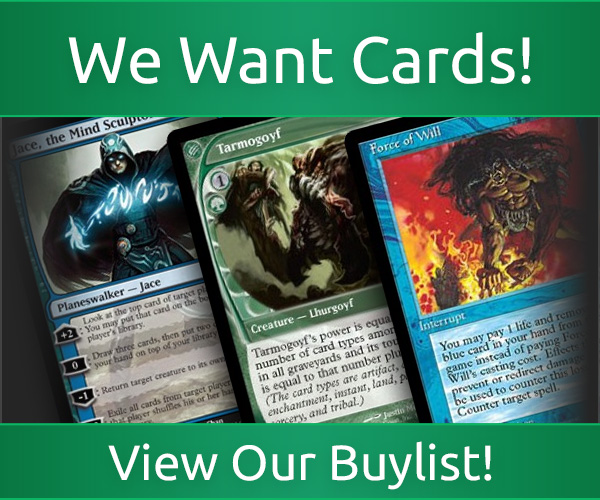Justin Brickman: You Can’t Keep A Good Bant Down
In a world where the top tables are dominated by W/U Flash and B/G Delirium, it’s easy to dismiss playing anything else, and settle for “if you can’t beat ‘em, join ‘em.”
However, I am not ready to admit defeat, because I’ve found the answer.
While Collected Company may have left us, its greatest hits are still part of Standard, they are still as powerful as before, and Reflector Mage and friends still have what it takes to be a viable threat in this metagame.
Bant Aggro, by Justin Brickman

The general game plan of this deck is to fill the ground with cheap creatures that have powerful effects to gain incremental advantage and tempo in the early game. This allows the Planeswalkers and flying creatures to take over the late game. This deck shares several cards with W/U Flash; however, the addition of Green gives the deck numerous card advantage engines, the ability to deploy multiple threats a turn sooner thanks to Servant of the Conduit and Krallenhorde Howler, and a powerful tool that you can only access in Bant colors.
Tamiyo, Field Researcher was played in the sideboard of Bant Company decks in the past, but now she’s been called up to the big leagues. Tamiyo is the reason to play this deck, as all three of her abilities are perfect for our game plan at every stage of the game. As the deck is flush with cheap creatures that block quite well, it is easy to achieve her ultimate.
Tamiyo is extremely good at generating advantage and putting the opponent in an awkward situation by using the +1 ability on opponent’s creatures, which means that she will either be netting 1-2 cards each combat step or slowly creeping up towards her ultimate. Her -2 ability locking down two non-land permanents can be enough to either close out the game by tapping down blockers, or can stop problematic permanents in their tracks to get additional draw steps to find an answer. The ultimate is something that is a real possibility against the other grindy decks in the format, and while not immediately game-ending, when combined with the right pieces this emblem makes it very difficult for the game to get out of reach. Being able to cast all your spells for free is a huge benefit that maximizes Duskwatch Recruiter’s activated ability, ensuring that you never run out of action.
In addition to Tamiyo, Green adds access to Duskwatch Recruiter and Tireless Tracker. These two are crucial in keeping up with the pace of the decks that trying to gain incremental advantage as soon as the third turn of the game. One issue I had with W/U Flash was that outside of the clues generated by as many Thraben Inspectors you draw and the looting from Smuggler’s Copter, the deck lacked the ability to get ahead on cards against opponents who are casting cards like Grapple with the Past and Glimmer of Genius. Having access to Recruiter and Tracker guarantees that you will have something to let you use your mana on every turn.
Gisela, the Broken Blade is a card that has generally seen minor amounts of play, and I can’t understand why. I find myself boarding it in for nearly every matchup, as it attacks/blocks profitably into nearly every other flying threat in the format. Against the R/B Aggro deck and other low-to-the-ground aggressive strategies, the life-linking body gives a huge momentum swing if unanswered for even a turn. In matchups where the games become long and resource management becomes a deciding factor, bringing in Bruna, the Fading Light in addition to her sister can be game-breaking. I know, seven mana is a lot for a 5/7, but she’s not particularly easy to kill when the main removal spells in the format are Grasp of Darkness and Harnessed Lightning. While Brisela, Voice of Nightmares has yet to be achieved, the value that Bruna herself brings to the table can be quite the momentum swing. While it is only the baseline of value you can get from her, reanimating a Reflector Mage still feels dirty.
minor amounts of play, and I can’t understand why. I find myself boarding it in for nearly every matchup, as it attacks/blocks profitably into nearly every other flying threat in the format. Against the R/B Aggro deck and other low-to-the-ground aggressive strategies, the life-linking body gives a huge momentum swing if unanswered for even a turn. In matchups where the games become long and resource management becomes a deciding factor, bringing in Bruna, the Fading Light in addition to her sister can be game-breaking. I know, seven mana is a lot for a 5/7, but she’s not particularly easy to kill when the main removal spells in the format are Grasp of Darkness and Harnessed Lightning. While Brisela, Voice of Nightmares has yet to be achieved, the value that Bruna herself brings to the table can be quite the momentum swing. While it is only the baseline of value you can get from her, reanimating a Reflector Mage still feels dirty.
The SCG Classics of previous weeks and SCG Knoxville have been dominated by B/G Delirium and W/U Flash. Bant has favorable matchups against these two decks, so I decided to skip SCG Columbus and prepare to take this into battle for not only the final NRGCT, but to a pair of PPTQs taking place in the Chicago area over the previous weekend.
I piloted the above list to a Top 4 finish on Saturday and a Top 8 finish on Sunday. I was fortunate enough to play against Delirium four times, winning three of those matches, as that was the matchup I viewed as the main reason to play this deck.
Game 1 is usually the harder game in the matchup, but Tamiyo is what lets pull ahead, as it is your best way to maneuver around Ishkanah, Grafwidow and Mindwrack Demon. Post-sideboard the matchup becomes a lot more favorable; I can’t imagine a better example of “good cards in, bad cards out,” as the cards that come in are huge role-players in how you want to shape the post-board game plan. Planeswalkers are a huge problem for Delirium, so the two copies of Nissa, Vital Force come in. While turning lands into 5/5 creatures is great, the real treat comes in the other two modes. We already know that Regrowth is a powerful effect to have in Standard, and turning every land drop into a free card is something that is nearly impossible for them to keep up with, especially when paired with Tireless Tracker.
The W/U flash matchup is slightly trickier to break down. Both decks have access to most of the same high-impact cards, so being able to maintain playing on curve and having access to all your colors is what can make or break this matchup from either side. These games are all about who controls the skies, which is where we fall slightly short in the main deck, as we are outnumbered on that front. Game 1 is fairly play/draw dependent, as the first person to Spell Queller and Archangel Avacyn has a huge advantage. While Servant of the Conduit should “steal the play,” giving your opponent a target to curve Copter into Reflector Mage is a huge tempo loss and can leave you playing from behind quickly. The key to winning this matchup pre-board is to keep the early Copters in check as well as try to prevent their Avacyn from flipping and sweeping your board. Again, this is where Tamiyo is your best weapon to pull ahead.
In the post-board games the same things matter, but we get to pull slightly ahead by bringing in our angels package and making the skies crowded as well. Getting the board into this scenario is when Tamiyo flexes her muscles as outside of combat, they have very a difficult time getting Planeswalkers off the board.
The matchups that this deck struggles with are decks that play Key to the City, such as R/B Aggro and G/R Energy, and U/R Dynavolt Tower decks. These two strategies couldn’t be further from each other but the way to attack them is essentially the same; keep them off either Dynavolt Tower or Key to the City. I know this sounds very simple and not very insightful, but it’s the truth. If Key to the City is in play, blocking isn’t a possibility and Bant is not heavy on removal. In the case of Dynavolt Tower, trying to keep a creature or planeswalker in play is even harder as their deck is all engines of card draw and removal. As the deck is naturally gaining energy, that even turns on their Harnessed Lightnings to take down the larger threats. Thankfully these strategies are a small percentage of the metagame.
I’ll most likely be running back Bant for the final NRGCT of the year, and (hopefully) the year-end Championship event! But that’s a different story for a different day, and with SCG Knoxville results and the SCG Invitational in Atlanta; who knows what new surprises standard will bring.
Justin Brickman is an SCG Tour grinder from suburban Chicago who began playing Magic during Innistrad block. His Magic accomplishments include an SCG Regionals Top 16 and a Super Sunday Series Top 4.




